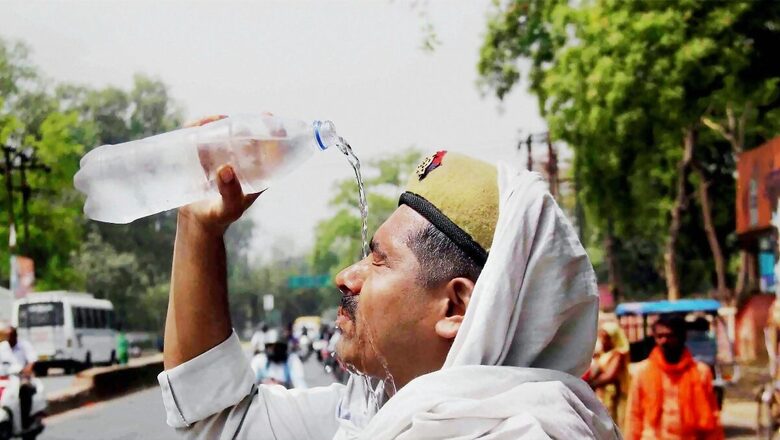
views
Delhi, which has been experiencing an intense heatwave, grabbed headlines on Wednesday when a small village in the capital registered the highest temperature of the day, setting a new heat record for the country.
Around 3pm on May 29, the India Meteorological Department (IMD) recorded a temperature of 52.3 degrees Celsius in Mungeshpur.
Mungeshpur, a small village surrounded by farmland and situated in northwest Delhi near the Haryana border, has consistently recorded the city’s highest temperatures in recent days.
“There is no way I can stand there for more than 15 minutes. Most farmers have also stopped planting the next crop, which is jowar, because it’s unlikely to survive in this heat,” said Ashok Kumar, a local farmer, to the Hindustan Times while bathing his cattle.
“This is the third time in the day I am bathing my cows. It’s the only way they stay cool. The calves often start foaming from their mouths when they are out too long,” Kumar added.
Not only Mungeshpur, but last week Najafgarh in northwest Delhi also recorded a maximum temperature of 47.8°C, hotter than the rest of the city. It became the hottest place in Delhi and India. On the same day, the primary observatory at Safdarjung recorded a maximum of 44°C.
Why Is This Region Hotter Than Other Parts Of The Capital?
Experts suggest that the extreme heat in northwest and west Delhi, more than in urban areas, could be due to local factors. The northwest border of Delhi is the first to be hit by hot winds from Rajasthan and Haryana.
“Areas like Mungeshpur, Narela and Najafgarh are in the frontline and take the first blow of the hot summer westerly or north-westerly blowing in from Rajasthan or Haryana. This is one of the major reasons why it’s so hot there,” explained Kuldeep Srivastava, a senior weather scientist at IMD, to The Times of India.
The region’s landscape, with large open spaces including barren land and industries, also contributes to the extreme heat.
“Look at the larger land use at these locations. Sometimes, despite plantations, there are patches of barren land, say open ploughed fields, that result in an increase in the land surface temperature,” noted Anumita Roychowdhury, executive director at the Centre for Science and Environment.
Roychowdhury further added, “There are many waterbodies around. In industrial areas, there is heat emission which feels just like if one were standing behind an air conditioner. Concrete, of course, also radiates heat.”
‘Error In Sensor’: IMD
However, the IMD in its evening bulletin stated that the maximum temperature at Mungeshpur was 52.9°C instead of 52.3°C, but later retracted this, citing possible errors or local factors.
“It could be due to an error in the sensor or the local factor. IMD is examining the data and sensors,” said IMD in a statement.
Meanwhile, Earth Sciences Minister Kiren Rijiju noted that a temperature of over 52 degrees Celsius in Delhi is ‘very unlikely’.
“It is not official yet. Temperature of 52.3°C in Delhi is very unlikely. Our senior officials in IMD have been asked to verify the news report. The official position will be stated soon,” Rijiju said in a post on X Tuesday.
Explore in-depth coverage of Lok Sabha Election 2024 Voter Turnout, Upcoming Phase, Results Date, Exit Poll And Much More At News18 Website




















Comments
0 comment